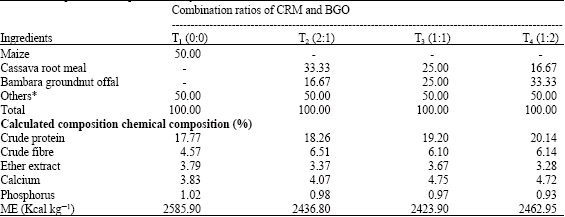Research Article
Performance and Egg Quality Characteristics of Layers Fed Different Combinations of Cassava Root Meal and Bambara Groundnut Offals
Department of Animal Science and Technology, Federal University of Technology, Owerri, Nigeria
E.B. Etuk
Department of Animal Science and Technology, Federal University of Technology, Owerri, Nigeria
I.C. Okoli
Department of Animal Science and Technology, Federal University of Technology, Owerri, Nigeria
A.B.I. Udedibie
Department of Animal Science and Technology, Federal University of Technology, Owerri, Nigeria












